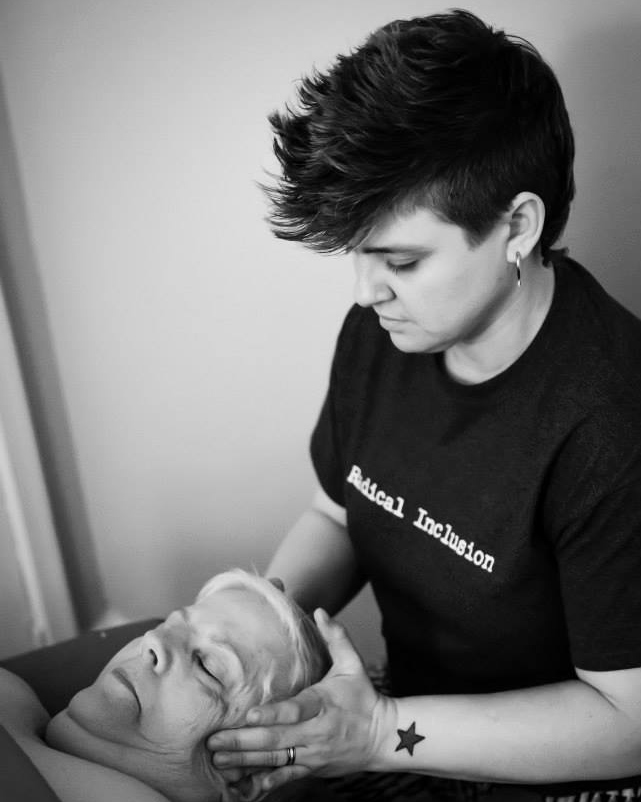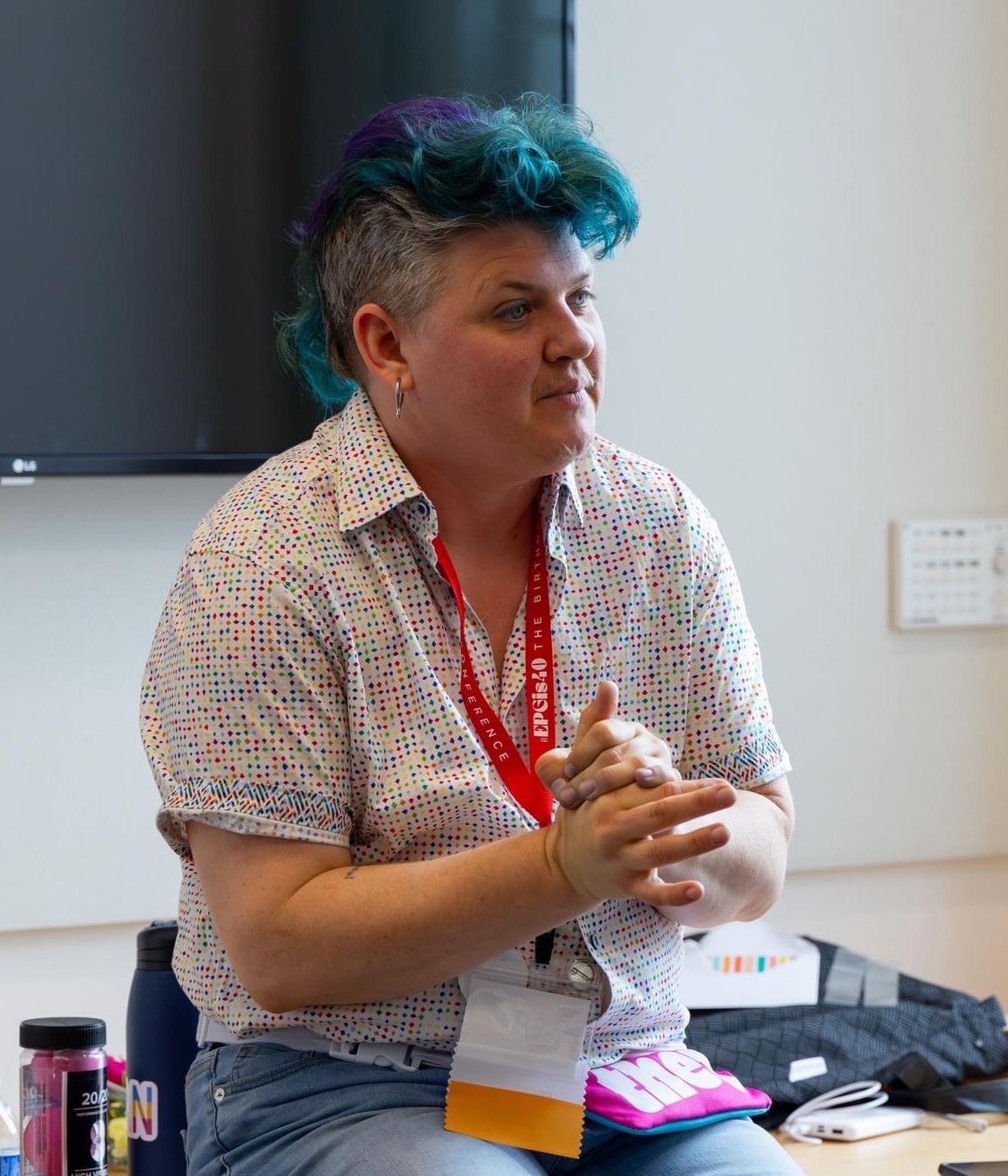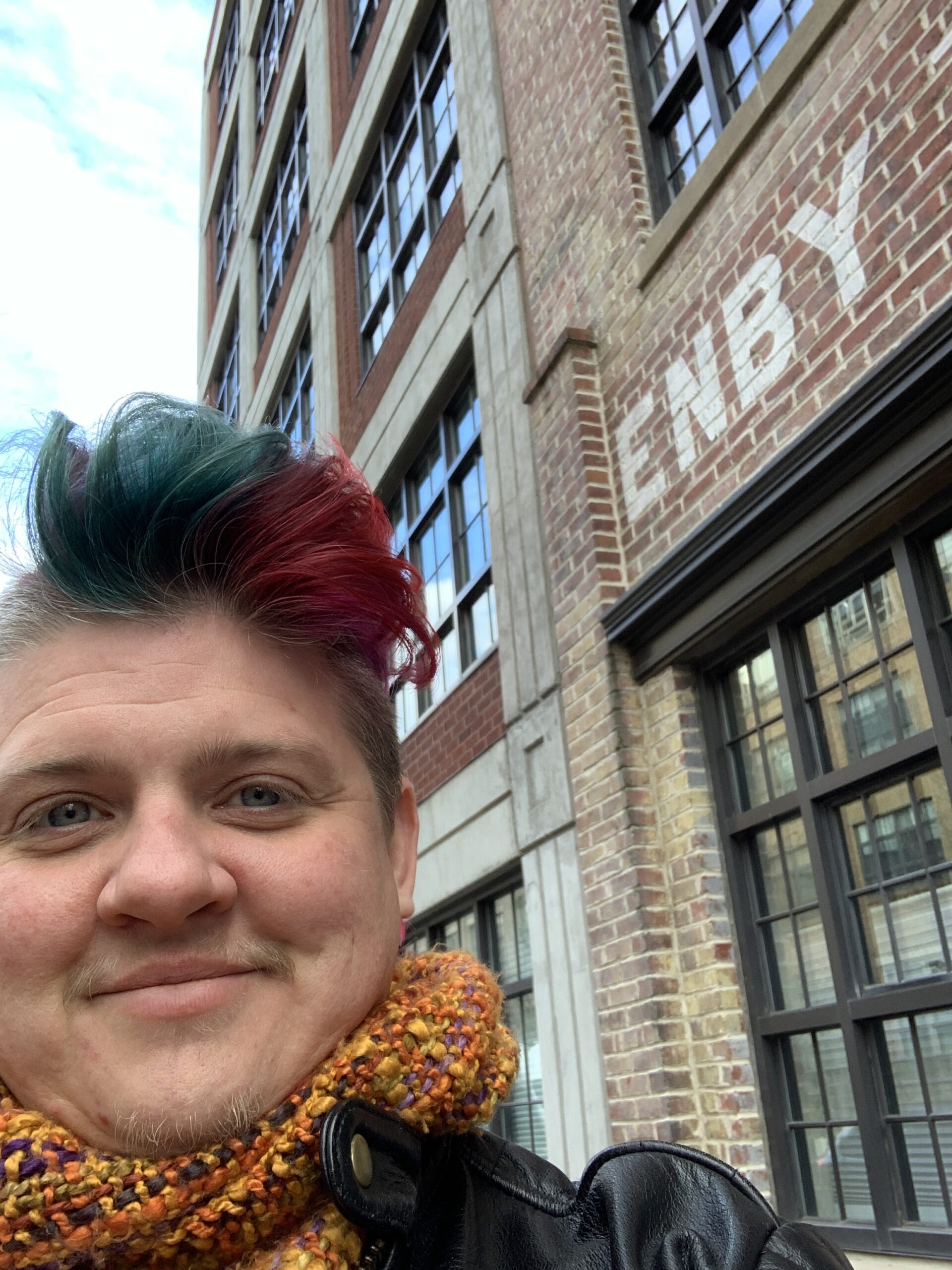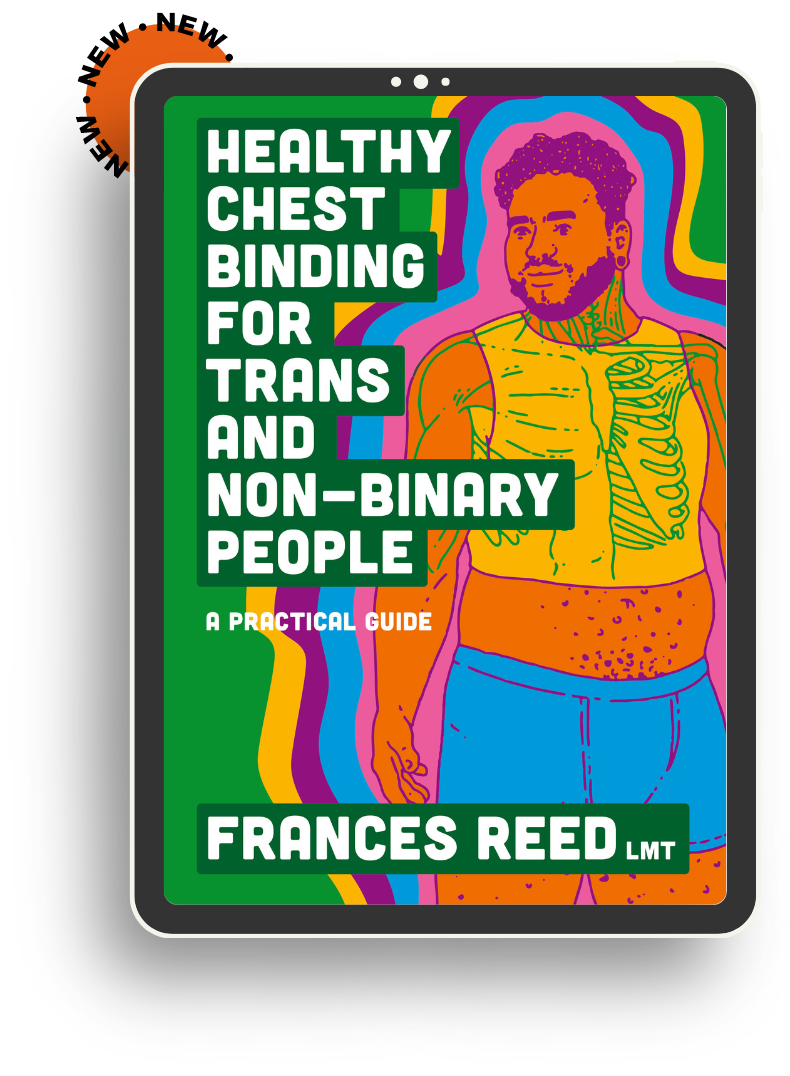Healthy Chest Binding for Trans and Non-Binary People: A Practical Guide
Binding is a crucial strategy in many transgender and non-binary people’s lives for coping with gender dysphoria, yet the vast majority of those who bind report some negative physical symptoms.
Written by Frances Reed, a licensed bodywork and massage therapist specializing in gender transition, this comprehensive guide helps you make the healthiest choices from the very start of your binding journey and provides resources for addressing pain and discomfort if it occurs.
Including guidance for choosing the right binder, approaching your first bind, an overview of potential health risks and complications, 23 self-massage and self-myofascial release exercises to minimize pain and dysphoria, as well as tips and tricks for exercising safely in a binder – this is the ultimate resource for anyone who binds or is considering binding.


Testimonials
Book Reviews & Praise
Comprehensive Resource
This groundbreaking and comprehensive resource is the Our Bodies, Ourselves for trans and gender-expansive folks who bind. Frances combines their expertise honed through 10+ years of working with clients, personal narratives, and peer-reviewed research to offer an accessible, compassionate, and affirming roadmap for healthy binding and holistic wellness. Readers will come away with a new understanding of their body and how to structure a sustainable binding practice that is right for them.
Sarah Peitzmeier, Ph.D., MSPH
Highly Recommended
This is a practical, comprehensive, inclusive, empowering and extremely helpful book. Highly recommended.
Yenn Purkis, Author of The Autistic Trans Guide to Life
::CHEF’S KISS::
Greg S., trans reader
Go-To Gem
Your go-to for clear and concise tips on feeling fabulous in your own skin. Wish I had this gem during my binding days – would have saved me from those bruises and rib issues!
Fox Fisher, trans author and activist.
Accessible
I’m fat, old, and have bad knees. I didn’t encounter anything in this book that was not possible for me to do. Great work with accessibility!
Anonymous, trans reader
Clear & Friendly
Read this book if you are binding or thinking about binding. It is clear and friendly, but anatomically detailed. It gives you a thorough understanding of the impact of unhealthy binding across your whole body and how you can instead easily take care of your body and bind safely. It’s a book you’ll come back to again and again, and then pass on to your friends.
Ed Whelan, author of Gender Confirmation Surgery
About The Author
Frances Reed, LMT, is a licensed massage therapist in private practice in Silver Spring, MD. They specialize in trauma-informed bodywork that supports the full spectrum of physical changes in social and medical gender transition.
Hi, I’m Frances Reed. My self-esteem, my physical health, my finances, my social life, and my gender identity were all impacted by a binding injury.
I almost had to choose between doing what I loved and being fully who I am.
No one should be in that position or in that much pain, so I’ve used my training as a massage therapist to study how binders impact the body and specialize in the treatment of people experiencing binding pain.
This book is a combination of a decade of observation, dozens of informal case studies, years of continuing education, and personal experience binding.
My Binding Story
My journey from aN Injury to a book
(from the Preface in Healthy Chest Binding for Trans and Non-Binary People: A Practical Guide ©2024 Jessica Kingsley Publishers)
In my early thirties, I suffered a binding injury that would end up defining my career. At that time in my life, I hadn’t figured out how to name my gender identity, but I knew that I was uncomfortable in my skin. Nature cursed me with a large chest, and no matter what I changed about my gender expression, the world saw breasts and made up its mind that I was a woman. The more I experimented with genderqueer expression, the more apparent it became that I was unseen by the world. And then a friend of a friend offered me one of their old binders.
Binding Euphoria
It was stained from the previous owner’s sweat and frayed where it had been cut shorter, but when I put that ratty thing on for the first time, I felt positively euphoric. I was suddenly aware of the dysphoria that I couldn’t even name until I felt it abate. That was over a decade ago, and I have not forgotten that feeling.
Elements of my gender were being successfully expressed in the world and I could finally explore who I wanted to be. I was no longer leading with my breasts. They were no longer defining me before I had a chance to. People still read me as a woman, but I felt a shift in their perceptions. I sensed strangers noticing my gender expansiveness, and I was nothing short of high on the affirmation.
People still read me as a woman, but I felt a shift in their perceptions. I sensed strangers noticing my gender expansiveness, and I was nothing short of high on the affirmation.
I was a massage therapist doing physically demanding work with my upper body for long hours. My career was just getting off the ground and I was pushing my body too hard. A day at work was like doing eight hours of resistance-band training on arms, back and pecs. I believed binding was having no impact. I didn’t consider that my muscles were working exponentially harder against the power-mesh fabric of my binder.
I had no way of knowing it, but my second-hand binders were almost certainly too small for me. They didn’t have tags, so I didn’t know the brand or size. Even if I’d known the brand name, looking on their website didn’t mention any advice, especially for AFAB bodies, about when and where to bind. Why? Because their products were designed for and marketed to cis men for gynecomastia (derogatorily called “man boobs). But, even in the queer and trans community, I didn’t hear anyone talking about binding health. It genuinely never occurred to me that wearing my binder when doing strenuous physical work was a bad idea.
I wanted to wear this life-changing, but overly constrictive, binder all the time. It replaced my bra. I didn’t know it was doing harm to me. If I’d had a resource spelling out the risks and best practices, it could have changed everything that came next in my life.
I’d been working in my binder at a stressful pace for about six months and suddenly a pain wrenched the right side of my chest. Certain movements sent a lightning bolt of pain so intense I would cry out uncontrollably and gasp for breath. Turning my head, lifting my shoulder, and projecting my voice all triggered the pain. Laughing and crying hurt. It was exhausting to be in constant pain. I stopped doing activities I loved.
Mysterious Injury
It wasn’t long until my right shoulder joined in on the pain. With reaching or pushing, the inflamed tissue burned inside the joint. Every night I built an elaborate pillow fort to prop up my arm and the smallest shifts woke me up in sudden pain. My wife had to help me get dressed because I couldn’t lift my arm over my head. Ibuprofen didn’t touch it; muscle relaxers didn’t change it; and cannabis couldn’t dull it. The pain was ever-present — as was my binder.
It seems outrageous to say now, but, at the time, I didn’t connect my pain to binding. I assumed that I’d hurt myself working, but couldn’t lose my income, so I kept pushing through it. I dissociated and used the muscles and joints of my upper body in strenuous repetitive ways on a daily basis. I made a fool’s gamble and lost. Eventually, I ended up unable to work for five months.
On my way to meet friends one day (wearing my binder, of course), the center of my chest started to ache intensely and it was frighteningly hard to breathe. I thought I might be having a heart attack and ripped off my shirt and binder at a stoplight. Within a few minutes of removing the binder, the ache became more manageable and it finally hit me: binding was the root of all of my upper body pain.
After binding but before the injury, my self-confidence was at an all-time high. Now, not only was the glorious affirmation gone, but it was replaced by excruciating pain and poor self-image. The trifecta of symptoms– chest ache, shoulder inflammation, and a stabbing pain — persisted and eventually I was desperately doing anything to make it all go away.
Desperate to Heal
I spent a few thousand dollars trying everything: doctor, acupuncturist, chiropractor, energy healer, massage therapist, and physical therapist. I endured transphobic appointments twice in hopes of getting relief. Each practitioner had a theory, but none knew anything about binding or how it impacted the body. Ultimately, combining the wisdom of a chiropractor, a fellow massage therapist, and my own insight, we teased apart the three injuries. The stabbing pain came from the partial dislocation of my third rib that was affecting how I moved my shoulder. I’d activated an old rotator cuff injury and had tendonitis and impingement in my shoulder, which explained the joint pain. And by not listening to my body’s pleas for rest, I developed inflammation in the ribs called costochondritis.
Though binding was an integral part of how I coped with my dysphoria, I had to prioritize my physical health, I’d let it go too long. I was too injured to bind for short periods — even when it mattered most. Whenever I put on my binder, the crushing ache in my chest became intolerable almost immediately. As if losing the ability to bind wasn’t bad enough, I couldn’t wear a sports bra or even a regular bra without pain. The only way that I could function was with my DDD chest hanging free. These appendages were bigger and more obvious as womanly breasts than ever before and I was plagued by seeing my reflection.
Back to Binding At Last
Once the rib got adjusted, I was slowly able to heal the three injuries and regain the strength I lost. When I could finally tolerate wearing an undergarment again it had to be a positively horrendous bra that I hated. It took almost a year but the costochondritis healed enough for me to switch to a sports bra. I accepted that I would never be able to bind again.
In 2015, I heard about a new, safer binder called gc2b. I purchased one immediately. The euphoria returned the minute I put it on. I’d been frozen in place on my gender journey. Now I could finally resume becoming my truth in the world. Although I was tempted, I never wore a binder while giving a massage again.
I’d been frozen in place on my gender journey. Now I could finally resume becoming my truth in the world.
I’ve used my training as a massage therapist to study how binders impact the body and specialize in the treatment of people experiencing binding pain. This book is a combination of a decade of observation, dozens of informal case studies, years of continuing education, and personal experience binding.
Since 2012, I’ve treated transmasculine clients who were binding and studied their cases. As word got out that I treated binding pain, more clients showed up on my table in need of help. I’ve consulted with colleagues on exercises to treat hyper-stretched and hyper-contracted muscles. I studied trigger point release to help alleviate referred pain and structural integration to free the rib cage and shoulder blades from collapsed posture. To spread this information, I started teaching workshops at conferences and college campuses. I went on podcasts and launched a website, healthybinding.com, to centralize information. I took each of these steps guided by the goal of creating tools for the transmasculine community to benefit from these techniques.
It shouldn’t hurt to be yourself
Through the writing of this book, I hope to teach people what they need to know to bind in sustainable, healthy ways- what not to do, how to find a binder option that suits their needs, how to get the most out of self-care routines, and how to treat their pain and discomfort, if it occurs.
To my readers: It shouldn’t hurt to be yourself and to live your truth in the world.
Join our newsletter
Healthy Binding Email List
Be the first to know when we schedule a new workshop or course, create a new healthy binding resource, or when we add new content to our site.
We'll never share your information, that's a promise.









